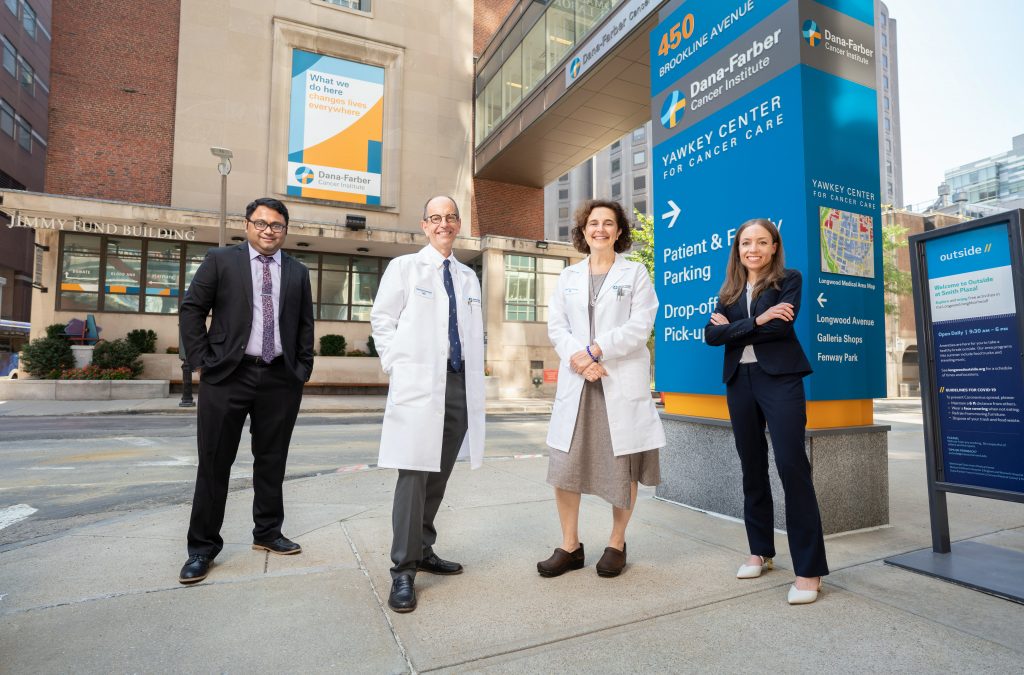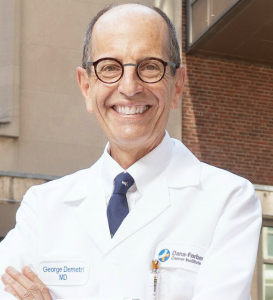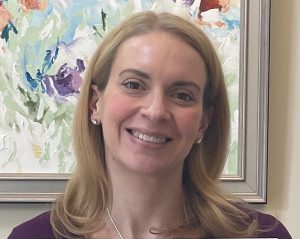Innovative Cancer Research to Change Patients’ Lives

DFCI Team – credit Bryce Vickmark
Liposarcoma is a rare and life-threatening form of cancer diagnosed in over 4,000 people a year in Canada and the United States. The Rossy Foundation Fund at Myriad Canada is providing ten million dollars US over five years to fund the David Liposarcoma Research Initiative at the Dana-Farber Cancer Institute in Boston. The project will advance innovative research with the potential to transform future treatment of liposarcomas.
“Without philanthropic support like this, these doctors and researchers can’t do what they do. Without people’s generosity to support that research, I wouldn’t be here today,” said liposarcoma patient, Gene McCarron.
What are liposarcomas?
Sarcomas are uncommon cancers of connective tissues, such as muscle, fat, or blood vessels. Liposarcoma begins in precursor (undifferentiated) cells related to fat cells which develop into malignant tumours virtually anywhere in the body. Radiation treatment can be helpful if liposarcomas arise on the arms or legs, but there’s no therapy with a proven impact on rates of recurrence after tumours are removed from the abdomen or pelvis.

George Demetry – credit Bryce Vickmark
Crucial Funding to Fight a Rare Disease
While evidence shows that the incidence of liposarcoma is on the rise, government agencies and pharmaceutical companies are reluctant to allocate resources to develop treatments for such a rare disease. However, for patients and families affected, significant advances cannot wait.
The Dana-Farber Cancer Institute is internationally renowned for its equal commitment to cutting-edge research and provision of exceptional patient care. Its deep expertise in these two areas uniquely positions Dana-Farber to discover, develop, test, and gain approval for new cancer therapies in its laboratories and clinical settings.
Over the past three decades, the Institute’s Sarcoma Center, headed by Professor George Demetri, MD, has acted as a magnet for expertise. To stimulate innovative research on liposarcoma, Dr. Demetri helped found the David Liposarcoma Research Initiative with crucial support from Myriad Canada.
“There are many different kinds of liposarcomas, and there is remarkably little data upon which to guide our management of patients,” said Dr. Demetri. “We need to customise our approaches toward patients based on science, and aim towards development of better technologies, tools and therapies.”
Accelerating Multidisciplinary Breakthroughs

Nicole Salomini
Founded on a pioneering collaborative model, the Initiative brings together seven research teams across different scientific areas. Its overarching aim is to design and conduct research projects to improve outcomes for patients worldwide.
In its first year, the Initiative has focused on drawing top researchers and developing a diverse research portfolio. The team’s insights are published in globally accessible peer-reviewed journals. “I’ve been just blown away by the calibre of scientists and clinicians involved,” said Programme Manager Nicole Solimini, PhD, an experienced basic science researcher.
The essential discoveries made by researchers are used to develop new therapies to test in clinical trials, such as those in which McCarron participated. “When my cancer returned for a fourth time, I started on a clinical trial of an immunotherapy and chemotherapy combination,” said McCarron. “I responded incredibly well.” The hope is that patients across the globe will be able to access more effective, tailored therapies.
Greater Than the Sum of its Parts
An international symposium is planned in autumn 2022 to share initial results, guide future research, and attract interest from other researchers and funders globally. “We don’t only want to recruit great labs,” said Dr. Solimini. “We also want to foster the next generation of scientists to be interested in this disease.”
The Initiative is poised to make fundamental discoveries which may apply to more common forms of cancers and other diseases, widening its impact. “What this generous philanthropy has given us is an enabling force to stimulate people working together in ways that any one lab, any one institution could never do,” said Dr. Demetri. “And to share their ideas in a way that really is synergistic, that is greater than the sum of its parts.”

